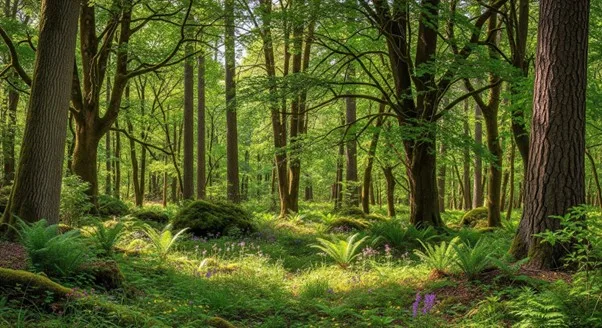ADAPTING TO A NEW REALITY: A TALE OF TWO FORESTS
Europe’s Forests: Navigating Climate Change Through Adaptive Management
Europe’s forests face a critical juncture as climate change alters environmental conditions, necessitating a shift in forest management practices. A comparison of two contrasting scenarios highlights the urgency and potential of this transformation.
The dangers of monoculture: A fragile past
Historically, monoculture forests, dominated by a single species such as spruce, were favored for their economic efficiency. However, their lack of diversity renders them increasingly vulnerable to the impacts of climate change. Prolonged droughts, rising temperatures, and intensified storms weaken these trees, creating ideal conditions for bark beetle infestations. These pests increase rapidly, leading to widespread tree death, a decline in timber value, and the degradation of essential ecosystem services, including carbon storage, water regulation, biodiversity, and the preservation of cultural landscapes.

A large-scale forest disturbance. A spruce-dominated forest with visible signs of stress and a lack of biodiversity: browning needles, potential bark beetle damage, and an overall dry appearance.
Resilience through diversity: An adaptive future
In contrast, adaptive forest management, centered on mixed-species forests, offers a promising path forward. The risks of large-scale pest outbreaks are significantly reduced by carefully selecting tree species suited to projected future climate conditions and fostering diversity within the forest canopy. The varied structure of these forests enhances their resilience to environmental extremes. Diverse root systems improve water retention, while varied foliage creates microclimates that support natural pest predators.
Strategies employed in this approach include:
- Assisted migration: Introducing tree species that are better adapted to warmer climates.
- Landscape-scale planning: Enhancing habitats for beneficial organisms like birds, beetle antagonists, and fungi.
- Continuous cover forestry: Maintaining canopy structure and promoting healthy soils.
- Science-based decision-making: Putting science into action by bringing knowledge into the operational level.

A resilient forest. Mixed-species forest demonstrating resilience and heterogeneity, including diverse tree species.
A call for proactive change
The difference between these two scenarios highlights the dynamic nature of forests and the need for adaptive management. While change is inevitable, ecological and economic collapse is not. By proactively investing in adaptive strategies, guided by scientific insights and open public dialogue, we can ensure that Europe’s forests remain sustainable, functional, and aesthetically valuable for future generations.
